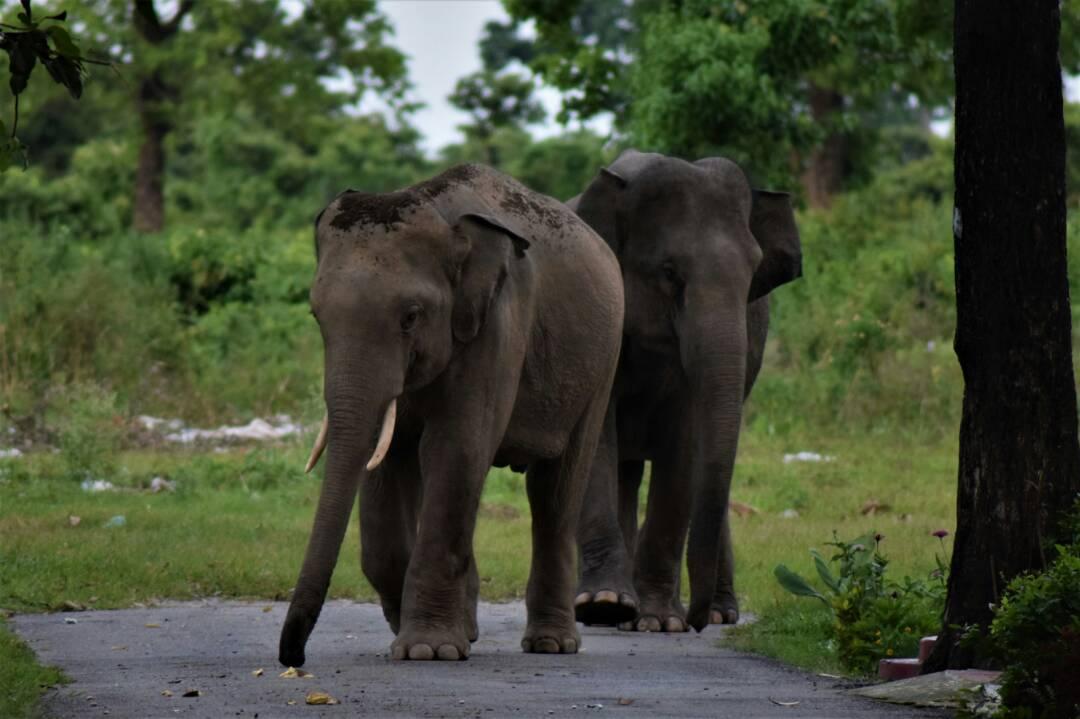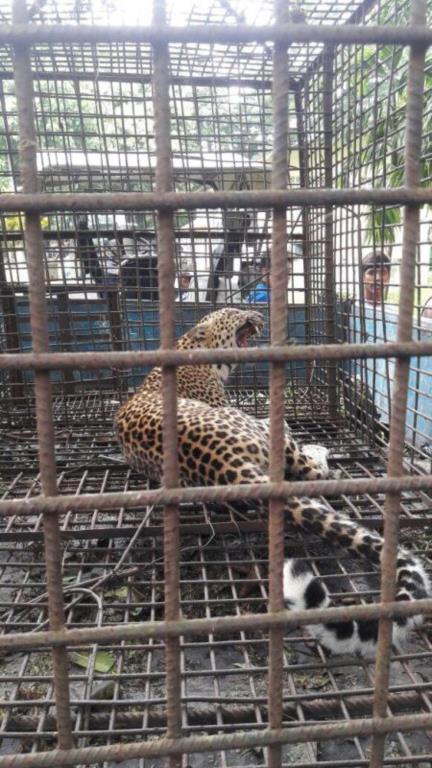Binnaguri is a lesser known hamlet in the Alipurduar district of North Bengal on the foot hills of western Bhutan. Perhaps the place owes its name to a type of grass known as "binn" growing here ('guri' being small habitation in local dialect). Its only importance is the Military Station. The area once belonged to the adjoining Tea Estates and was requisitioned by Army some time in 1962.
The Station presents an amazing aura of trees that rise up to the
sky proving habitations to birds and animals. Few of the common ones are simul (silk cotton), kathal (jack fruit), sal (sheora robusta), sishoo (Indian mahogany), dumar (cluster fig) and champa (champak). They provide ideal
shelter to the avian who during the flowering and fruiting seasons visit to eat
pollens, nectars and berries. Birds commonly found are peafowl, grey hornbill,
parakeet, golden oriole (both black capped and maroon), drongo, chestnut shaded
petronia, Jordon’s bayas (weaver birds), bulbuls, Rufus sulina, spot winged and
chest winged starling, hill myna, yellow footed green pigeon, brown headed
barbet, oriental magpie robin, laughing thrushes, bulbuls (red vented, black
and red whiskered), common tailor birds, fin coated barbets, and of course house crows. One also finds sun bird sucking
nectar from the flowers.

 Parrots in a nest
Parrots in a nest
 A lonely sove
A lonely sove
 Green pigeon on a dumar tree
Green pigeon on a dumar tree
 Common house crow
Common house crow
The lush green foliage and the grass attract elephants from the surrounding
forests. The smell of ripening jack fruit attracts them so also the pineapple
in kitchen gardens. During fruiting season herd of elephants visit the station.
So far the animals have not harmed any residents or caused any major damage to
the property. The army personnel are used to them and some time drive them away
bursting crackers and lighting torches. Many come out and watch them from a
distance. Both men and elephants live in perfect symbiosis.
 On the golf course
On the golf course
 A tusker coming out
A tusker coming out
 A pair
A pair
 A herd invading
A herd invading
Some time, the elephants intrude on the nearby railway line. There
has been instance of accidents and the animal either getting injured or dead.
 An accident elephant
An accident elephant
The other animal that often visits the Station is leopard. There are
few of them and the Forest Department sets up traps to catch them and
rehabilitate in the nearby Gorumara National Park.


Unlike
tigers leopards are scavenges and versatile opportunistic hunters. They prowl
during the night in human habitations and visit nearby hamlets and villages in
search of food - goats, chicken and even leftover food and rest during the day.
They rarely become man eaters but attack and maul human beings in self-defense.
So far there has been no instance of men and leopard conflict in the Station. I
wonder why the predators stray into the Station when they have plenty to kill
and survive in the nearby forest. Could be the smaller animals like hares and
rats and left over foods thrown by the jawans
is the attraction.
Leopards
are solitary predators and remain well camouflaged during the day and prowl
during the night. They can co-exist with other predators like Bengal tigers,
stripped hyenas and dholes (wild dogs). For this reason, the trapped leopards
are released in Gorumara National Park for re-habitation. They prey on chital, sambar, wild boar and
small animals like hare, goats and dogs etc.
They are good climbers and drag their kill on tree branches to hide and
eat later.
Leopards were first discovered in
Bengal in 1794 by Friedrich Meyer - a German doctor and naturalist. There are some differences between leopard
and panther though both belong to big cat species (lion, tiger and jaguar). The
term panther comes from Greek word pan
meaning “all” and ther meaning “beast of prey”. It is the melanistic form (excessive production of melanin) of any of the big cat species making their coat dark or almost black. Thus we have black panther. The word leopard comes from the combination of Greek words for lion and panther. Leopards have yellow fur with rosettes scattered on it. Both are characterised by long body, large head and short legs. Both have the ability to roar and are good climbers.
About Author: Retired Col from the Indian Army. He also wrote 'Saga of Jagannatha' and 'Badadeula at Puri'.